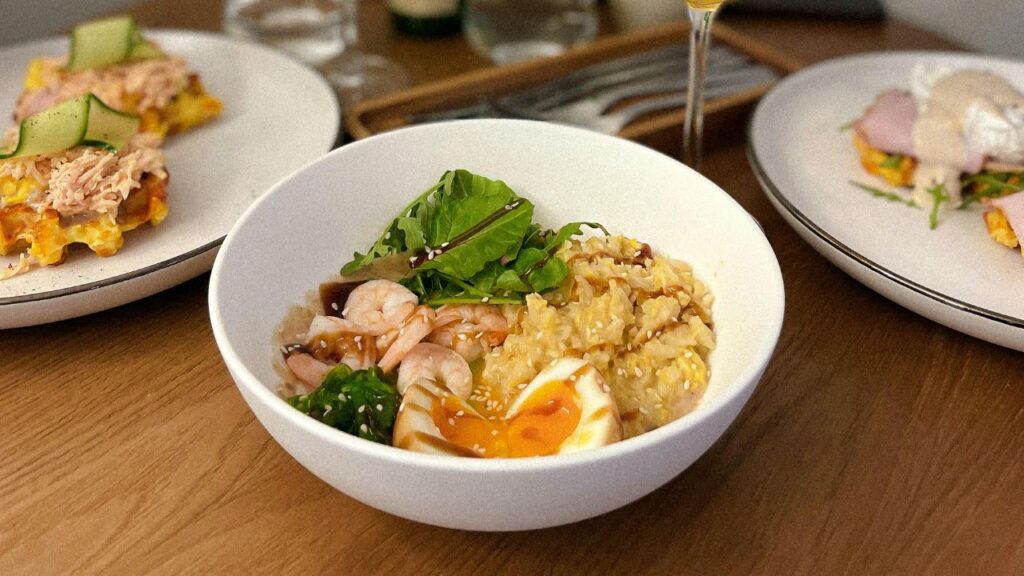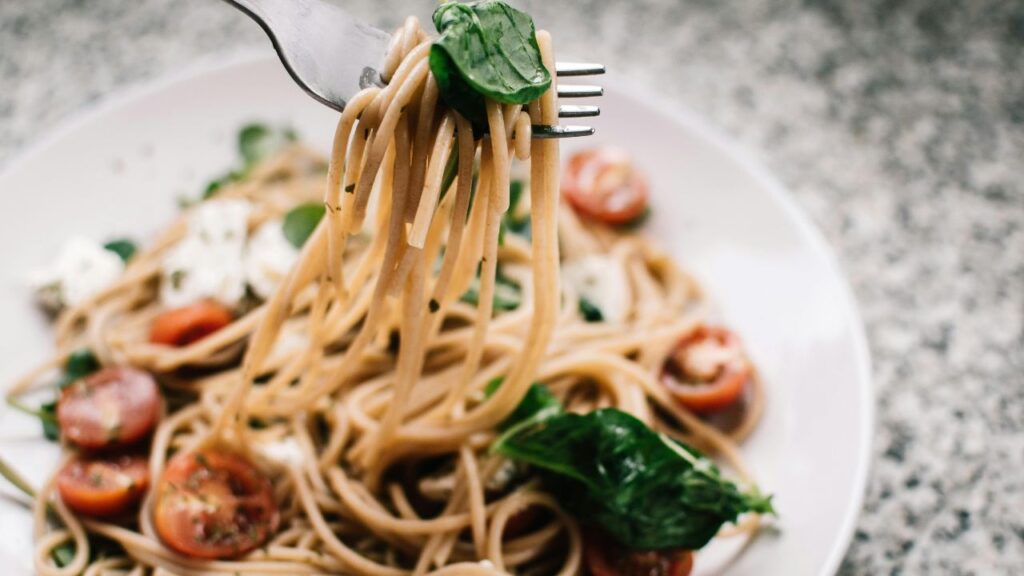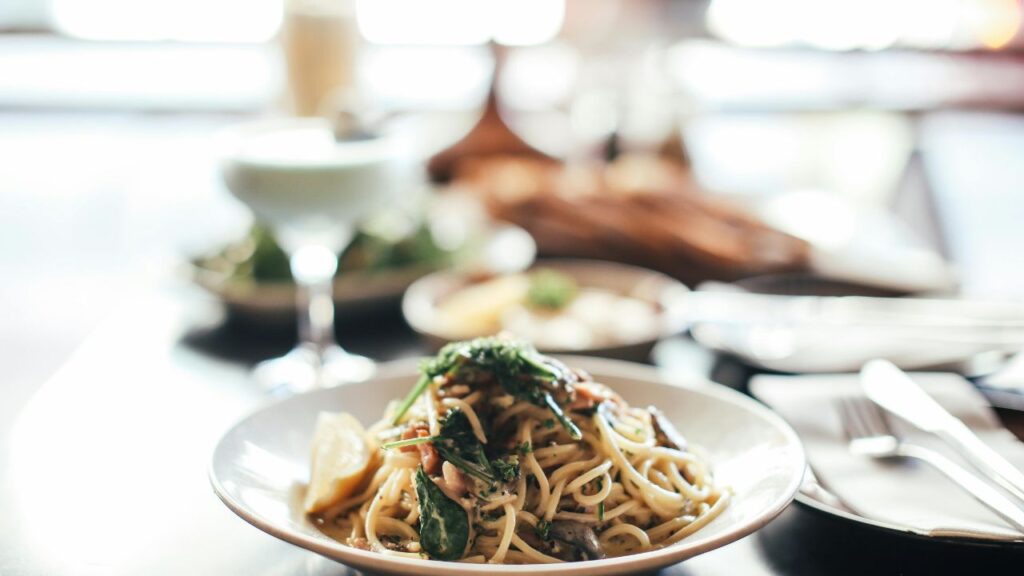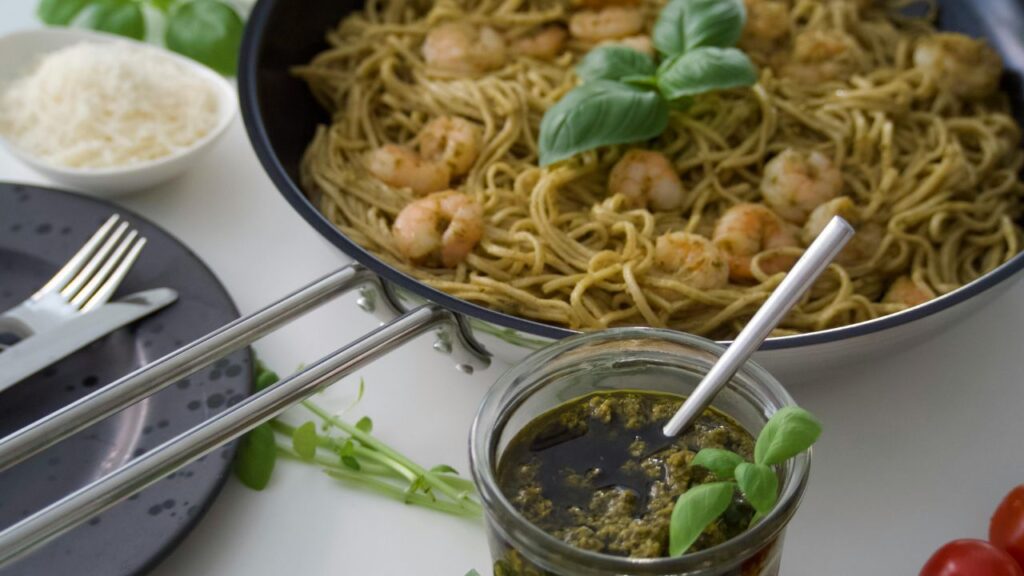House Special Mei Fun belongs on your table if you have ever yearned for a meal that is equal parts exciting and cozy. Standard in Chinese-American cuisine, this vivid stir-fried noodle dish tosses thin rice noodles with a rainbow of meats, shellfish, and crisp vegetables all mixed in a savory-sweet sauce. From its beginnings to detailed cooking techniques and contemporary tweaks, this guide covers all you need to know about House Special Mei Fun—from takeout regular to home cook wanting to perfect a new recipe. Let’s reveal the secrets of this very popular noodle meal!

What Is House Special Mei Fun?
House Special: Thin rice noodles take front stage in a Cantonese-inspired stir-fry occasionally written Mei Fen. Usually include shrimp, chicken, barbecue pork, and maybe even fake crab or lobster, the “house special” name signifies it’s loaded with a variety of proteins and vegetables. Seasoned with soy sauce, oyster sauce, and aromatics like garlic and ginger, stir-fried until tender but somewhat chewy noodles are With a delicate texture that marvelously absorbs flavors unlike those of thicker noodles like chow mein or lo mein, Mei fun, commonly known as rice vermicelli, has This recipe’s simplicity and short cooking time make it dependably a crowd-pleaser.
The Origins of House Special Mei Fun
Though stir- fried rice noodles first came from Southern China, the Special Mei Fun we know today is mostly a creation of Chinese-Americans. Immigrant cooks in the United States adapted classic Cantonese meals to suit local preferences using readily available items including bell peppers, bean sprouts, and Western-style BBQ pork. The term “house special” caught on as restaurants began presenting distinctive variants of the meal using their own protein combinations and sauces. It evolved into a menu mainstay over time, praised for its ability to highlight a chef’s inventiveness while honoring its warm, umami-rich foundation.
Key Ingredients for Authentic House Special Mei Fun
The wonders of House Special Mei Fun are found in the components. Start with tiny, translucent strands called dry rice vermicelli noodles that soften rapidly in boiling water. Though they vary, proteins usually consist of a triad of sliced chicken, prawns, and char siu (Chinese BBQ pork). Vegetables provide crunch and color; shredded cabbage, carrots, onions, and bean sprouts especially so. Usually for saltiness and color, the sauce blends light and dark soy sauce; oyster sauce for umami depth; and a bit of sesame oil. While eggs scrambled into the noodles add richness, aromatics such as garlic, ginger, and scallions build the flavor basis. Optional additives include fresh cilantro or chili paste for heat.

How to Cook Perfect House Special Mei Fun at Home
Getting House Special Mei mastered Fun calls with both fast hands and a hot work environment. First soak the rice noodles in warm water for ten to fifteen minutes until malleable but not mushy. Sort and reserve. Drain Once heated in a wok or skillet, stir-fry minced garlic and ginger until fragrant. Sear shrimp first, then chicken and pork; remove them once cooked in stages. Toss bell peppers and carrots among other vegetables; stir-frying till tender-crisp Clear everything to the side, whisk beaten eggs into the wok, and scramble. Reverse the proteins, toss in drained noodles, then sprinkle with the sauce mixture. Finish with bean sprouts and scallions; toss violently to cover the noodles uniformly. Present right away with lime wedges or chili oil on the side.
Popular Variations of House Special Mei Fun
Among the pleasures of House Special Mei Fun is found in its versatility. While vegans pile up on tofu, mushrooms, and bok choy, seafood aficionados might substitute squid or scallops. Regional variants include:
- Singapore Mei Fun: Golden-hued spiced with turmeric and curry powder
- Added fish sauce, basil, and a lime squeeze inspired by Thailand.
- For a hot kick, toss kimchi and gochujang, or chili paste.Some chefs even serve it “dry” with a side of broth or “wet” with extra sauce. The possibilities are endless!
Nutritional Benefits of House Special Mei Fun
Even though luxurious, House Special Mei One can include fun into a well-balanced diet. Lower in calories than pastas made from wheat and devoid of gluten, rice noodles are Whole vegetables that contribute fiber and vitamins, lean meats like chicken and shrimp supply vital amino acids. Low-sodium soy sauce can help lighten the dish; cut oil; and fill up on vibrant vegetables like broccoli and snap peas. Key is portion control; savor it as a main dish with steaming greens or split it as a shared appetizer.
Where to Find the Best House Special Mei Fun
True House Special Mei. Fun is best at family-run Chinese-American eateries. Cities including Los Angeles, New York, and San Francisco feature famous locations like Hop Kee or Great Eastern Restaurant. Search for menus including at least three proteins and fresh, crisp vegetables. Upmarket Asian fusion restaurants might have gourmet variations featuring truffle or lobster oil. Should dining in not be possible, local treasures are frequently highlighted on delivery apps like Uber Eats or DoorDash.

Pairing House Special Mei Fun with Drinks and Sides
Accompany House Special Mei Play with light and cool beverages. Jasmine tea counteracts the richness of the dish, much like Tsingtao, a clean lager does. For a non-alcoholic substitute try lychee juice or sparkling water with lime. Lime is For a full feast, paired with appetisers like hot-and- sour soup, spring rolls, or steamed dumplings.
Common Mistakes to Avoid When Making Mei Fun
House Special Mei Fun causes even experienced chefs to trip. Noodles over-soak get gummy; follow packaging directions exactly. Cook in batches if necessary; crowded work results in steaming rather than scorching. Skipping the “wok hei,” (high-heat stir-fry) produces soggy noodles. Underseasoning is ultimately a mistake; taste and modify oyster or soy sauce before serving.
House Special Mei Fun vs. Other Noodle Dishes
| Feature | House Special Mei Fun 🥢🍜 | Comparison Dishes 🍝 | Why It Matters 🌟 |
| Noodle Type | Thin rice vermicelli (mei fun), delicate and absorbent | Chow Mein (wheat noodles), Pad Thai (flat rice noodles) | Lighter texture that soaks up sauces without becoming mushy. |
| Flavor Profile | Savory-sweet with umami (soy sauce, oyster sauce) | Lo Mein (richer sauce), Singapore Noodles (curry spice) | Balances subtle sweetness with salty depth for a crowd-pleasing taste. |
| Protein Variety | Mix of 3+ proteins (shrimp, chicken, BBQ pork) | Single-protein focus (e.g., beef chow mein) | Offers a “surf and turf” experience in one dish. |
| Cultural Roots | Chinese-American fusion with Cantonese inspiration | Pad Thai (Thai), Chow Mein (Chinese), Ramen (Japanese) | Reflects immigrant culinary adaptation and creativity. |
| Vegetable Inclusion | Crisp, colorful veggies (bean sprouts, carrots, cabbage) | Often fewer veggies in dishes like Singapore noodles | Adds freshness, texture, and nutritional balance. |
| Cooking Technique | High-heat stir-fry (“wok hei”) for smoky flavor | Boiled or simmered (ramen, pho) | Delivers signature charred aroma and tender-crisp textures. |
| Dietary Adaptability | Easily gluten-free (rice noodles, tamari) | Wheat-based noodles (chow mein, lo mein) limit gluten-free | Appeals to gluten-sensitive diners without sacrificing flavor. |
| Serving Style | Dry-tossed with minimal sauce, emphasizing noodle texture | Saucy dishes (pad see ew, lo mein) | Let the noodles shine while keeping the dish light and not overly greasy. |

The Future of House Special Mei Fun
House Special Mei Fun changing as fusion cuisine expands. Chefs are experimenting with organic noodles, plant-based proteins (such jackfruit “pork,” and zero-waste cooking utilizing vegetable leftovers in broths. Frozen versions and meal packages are also starting to show up, allowing busy home cooks to have this traditional meal available.
FAQ’s
1. Is House Special Mei Fun gluten-free?
Indeed, if made with gluten-free soy sauce and rice noodles.
2. Can I use fresh rice noodles instead of dried?
Correct! Change cooking time since fresh noodles soften more quickly.
3. What’s the difference between mei fun and chow fun?
Mei fun makes thin rice vermicelli, while chow fun calls for broad, flat noodles.
4. How do I prevent noodles from sticking?
Toss regularly in a well-oiled work and try not to overcook.
5. Can I make it vegetarian?
Absolutely! Trade meets for tempeh, tofu, or more vegetables.